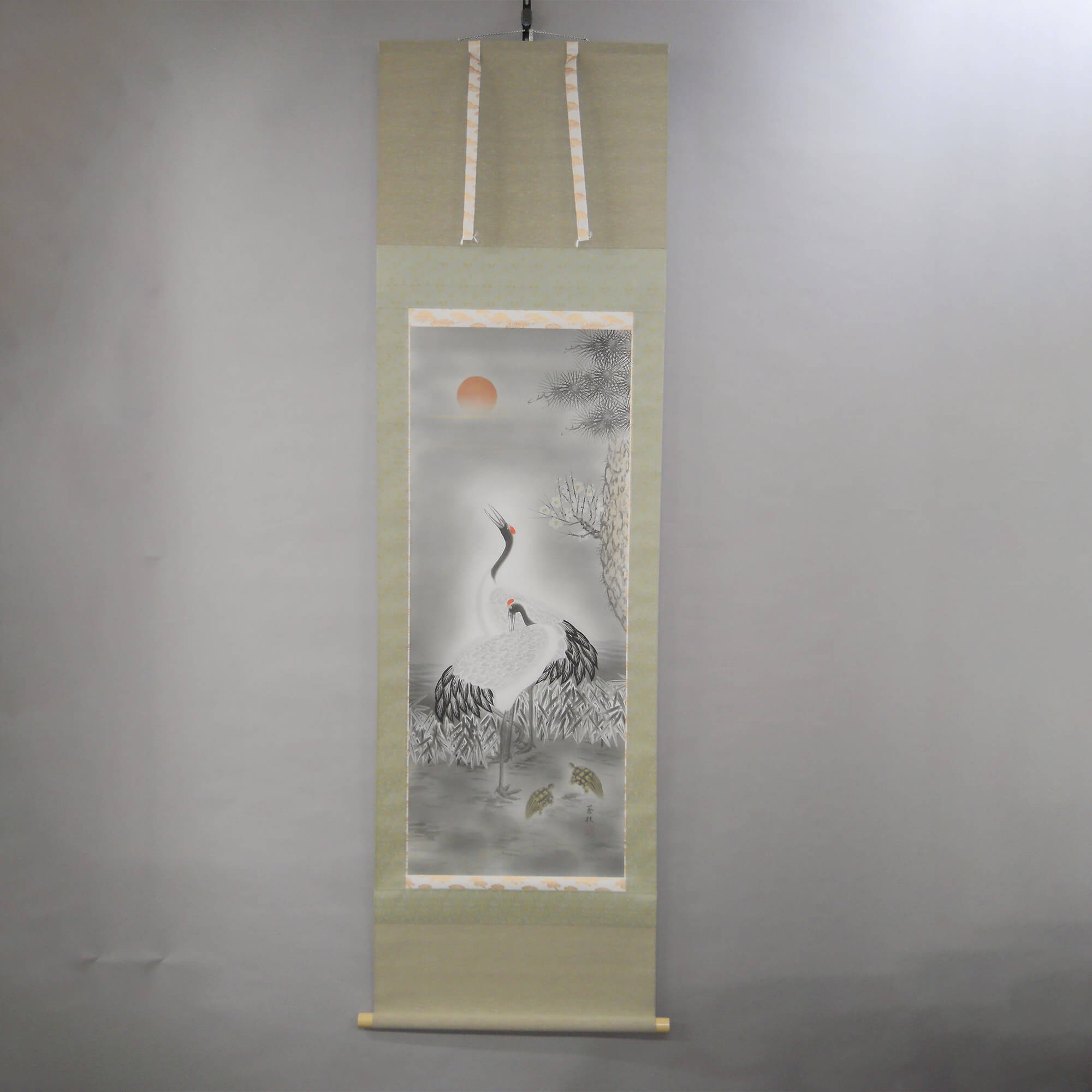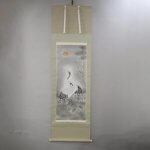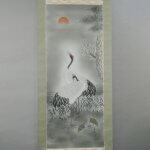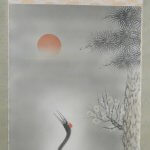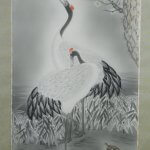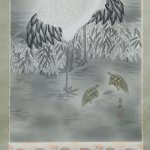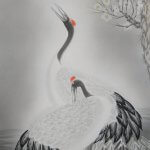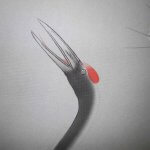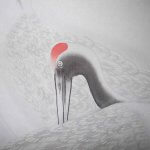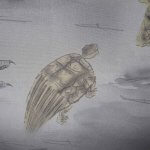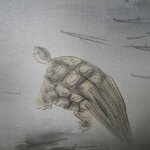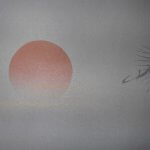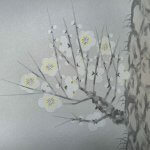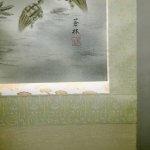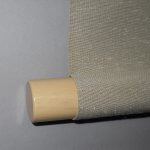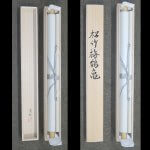Kakejiku Hanging Scroll: The Combination of Pine, Bamboo, Plum Trees, Cranes and Turtles / Fujishima Sōrin - Shō-chiku-bai-tsuru-kame
- Product ID
- B0010
- Name
- Fujishima Sōrin
- Profile
A Japanese-style painter. Member of the Shinbikai. Pupil of Kawahito Katsunobu.
- Size
- 600mm x 1910mm
- Roller End Material
- Wood
- Material of the Work
- Silk
- Stock Condition
- Sold out
- Duty and Taxes
Import duty and taxes are beyond our control and may apply to your shipment. Please noted that these fees are the responsibility of the buyer.
- Description
The pine tree is considered a symbol of longevity in Japan because its needles are always green.
The Japanese people admire bamboo tree characteristics: they grow straight and are flexible, yet hard to break. They liken bamboo to the fortunes of a family and hope that their family fortunes will not decline.
The plum tree is the first tree to blossom, which indicates that spring has arrived. This is why the plum tree is considered a symbol of vitality in Japan.
For the reasons described above, the Japanese believe that “shō-chiku-bai” (the combination of pine, bamboo, and plum trees) is a lucky symbol.
The crane and the turtle were considered the vehicles of immortals in China, so they are symbols of longevity. The Chinese introduced this idea into Japan, and now the Japanese people love the crane and the turtle as symbols of longevity, as well.
This is a painting of “shō-chiku-bai-tsuru-kame” (the combination of pine, bamboo, plum trees, cranes, and turtles) by Fujishima Sōrin. The quiet colors of “sumi” (ink) give a refined atmosphere to the entire piece.

